Indonesian Navy From its Origin to this Day
 Tentara Nasional Indonesia Angkatan Laut
Tentara Nasional Indonesia Angkatan Laut
Circa 350 ships 1945-today
A bit of History: Ancient Indonesian Kingdom’s fleets
A bit like the Philippines we saw some time ago, Indonesia’s history was defined by the sea and a division which uiltimately led to a long colonial history. Its geographic position and natural resources and its human migrations and contacts was accompanied, unlike the Philippines, with the spread of Islam from Sumatra in the 7th century AD to Islamic kingdoms through a maze of 17,000 to 18,000 islands with about 1,000 both so small and remote they permanently inhabited. The landmass is spread from the equator in South East Asia. It layed in a strategic sea-lane position and profited from international trade.
The start of the nautical history is linked in sasnrit texts on Yawadvipa, a Hindu kingdom in Java and Sumatra appear, known from 200 BCE. Very little is known about its immediate relations with its neighbours.
Hindu and Buddhist states flourished across Indonesia and by the 4th century CE Kutai and East Kalimantan, had amongst the most influencial kingdoms, but one took prevalence, Kutai Martadipura ocated in present East Kalimantan. It is likely the latter had enough wealth and influence to project its power through the sea, but little is known about the type of ships that dominated the area. It’s likely these were close in design to the typical pacific dugout-derived catamarans, with platforms and rowers since between islands, the wind was not always sufficient for these to freely evolve. Although some historians shed light on these early endeavours, practically nothing is known but the usual trade, fishing and piracy activities reported in the archipelago, mentioned in very few surviving sources. Bas-relief could sheld light on this, but they were also exceedingly rare and only reported the most important matters, nothing as trivial as what happened at sea at the time, even a seaborne invasion. One observed limit was the scale of the kingdoms and lack of monumental architecture.
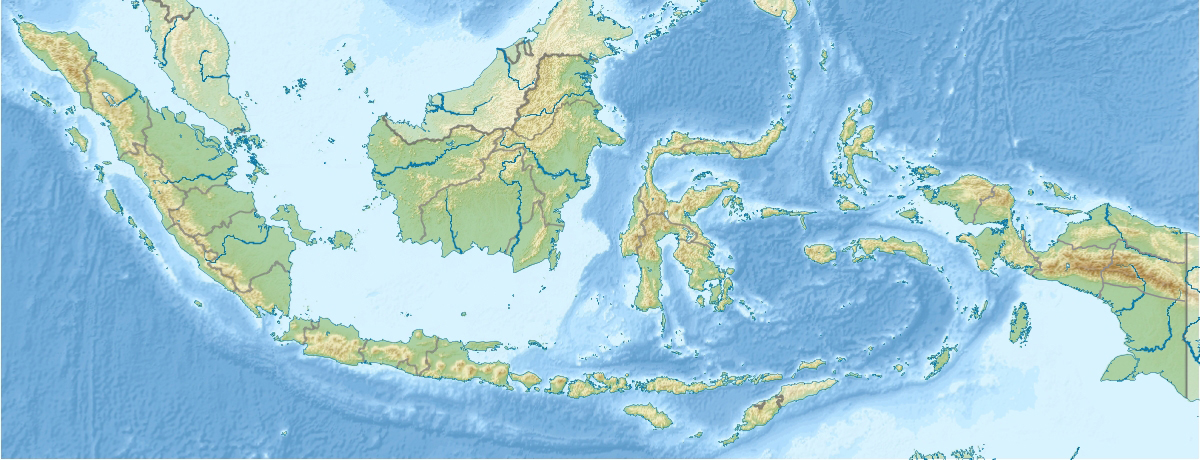
The geography of Indonesia. Trade and war developed in the “inner sea”, or “java sea”.
Up to 700 CE two, major Kingdoms developed, those of Tarumanagara and Sunda. In what is called the “Nusantara Islands”. Political history really started from the 7th to 11th (601–1100 CE) centuries was with the kingdom of Srivijaya in Sumatra and Sailendra. One shining monument was Borobudur, largest Buddhist temple in the world. Before the 14th-15th centuries the scarcity of evidence makes it very tricky to make an overview of political, let alone naval history in the region. By the 15th century, there were several noted kingdoms however, Majapahit in East Java, which was the greatest of pre-Islamic Indonesian states. Malacca on the west coast of the Malay Peninsula became at the same time the largest Muslim trading empire and saw through trade, the rise of Muslim states in the Indonesian archipelago.
Early Ships Types: Indian or Indonesian ?
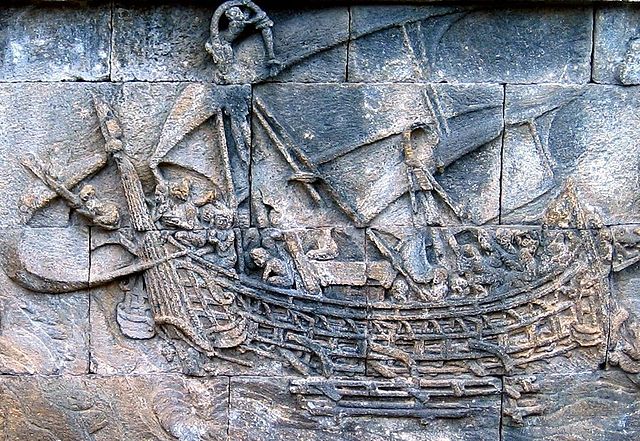
Set in stone: The Borobudur ship circa 700 CE, a bas relief in the famous temple, one of the rare historical evidence in the whole of Indonesia.
This ship was apparently a 8th to 9th-century wooden double outrigger sailing vessel. In all, seven types of ships were depicted on the temple walls, the largest visual evidence found so far in the whole of Indonesia, apart the few engraving of Ducth “naturalists” in the 18th century of existing traditional vessels.
She ships evidently had outriggers not as long as their hulls, bipod or tripod mast with canted square sail (tanja sail), bowsprit and spritsail, rowing gallery (sitting or standing rowers), a deckhouse and apparently oculi either carved or bossed eyes on the prow, a universal tradition, and quarter rudders. Some ships had from 6-9 oars, and this is perhaps a sytlistation, meaning they could have received much more. Below are extra examples of these vessels, and it’s unclear if they were for war or trade (not archer or any “infantry” type is shown).
The ship depicted in the Borobudur temple seems Indian to both Indian and Dutch scholars and cited the influence of India to the Nusantara Archipelago and either comes from India or is a local copy. If true, this underpins the notion thatt Javanese ships are inferior to Indian ships and not worth depiction anywhere. However these old studies has been contradicted by more modern evidence showing the Javanese were experienced navigators, building large ships around 1000 CE already like the kolandiaphonta. Characteristics are now believed to be of Indonesian origin due to the outriggers, canted sails and lower boom, bipod/tripod masts easier to erect and fold, and rowing galleries. All these are more at ease with the conditions of the archipelago than the vast expansed of the Indian Ocean.
Somes also stated the main bas relief ship is believed to be either Srivijayan or Malay. The Srivijaya rarely records any vessel, and at the time the Malay samvau (“Sampan”) shown on the Kedukan Bukit inscription (683 AD) in Sumatra is quite different. Some says the Lancang, mentioned in two inscriptions on the northern coast of Bali in the Old Balinese language (896-923 AD) could correspond to this tyme. But the ship is clearly Javanese with not proof of it being attributed to Malaysia or else.
Some stated it could be also a Majapahit ship, but the few sources states about the jong, malangbang, and kelulus and they lacked outriggers.
Until new evidence is found somewhere, this is likely to stay a mystery.
A scarce pre-colonial historical evidence
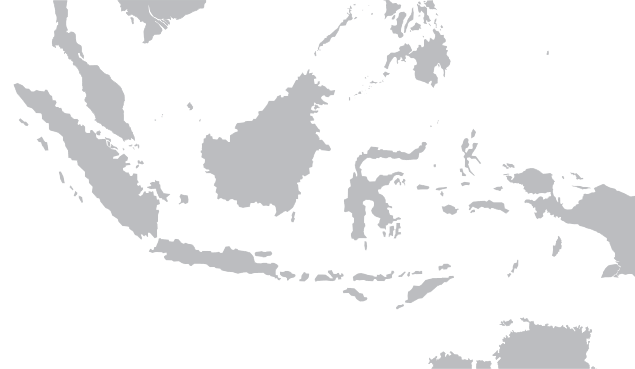
The Expansion of the Majapahit empire, which encompassed much of the Indonesian archipelago until the early 16th century. Its most illustrious leader was Gajah Mada, credited with bringing the empire to its peak of glory. Sadly, nothing is known about the role of its ships/fleets in this development. It never had been reported. However the navigation between these islands did not implied large ships. Simple outrigger vessels equipped for a few days of navigation were plenty enough. And necessity is the mother of invention.
As reported by Rahayu S, Hidayat there is little evidence of the historiography of Indonesia, at least before the start of colonization, notably, but partially, under Portuguese rule, and from there, Indonesian history starts to be documented in the context of colonial expansion and interest. The deeper understanding on Indonesian Naval History was done by the constitution of a Geographical and Historical documentation conducted by Dutch historians in the context of colonial power. Until there, only reports of contacts with local emerging local kingdoms coming into contact with the VOC and the Dutch East Indies government could hold some useful information. Between the inaccessibility of local people as the primary source of the period and limitations of the local archives that could be found both had an influence.
The Portuguese arrived in Indonesia from the 16th century to try to master the trade of nutmeg, cloves, and cubeb pepper, settled in Maluku. They observed the local trade, noted some events, but this was a very partial view. One things is certain, no Indonesian Kingdom had any ship of the scale and firepower of the Portuguese Carracks.
Under Dutch Occupation and rule
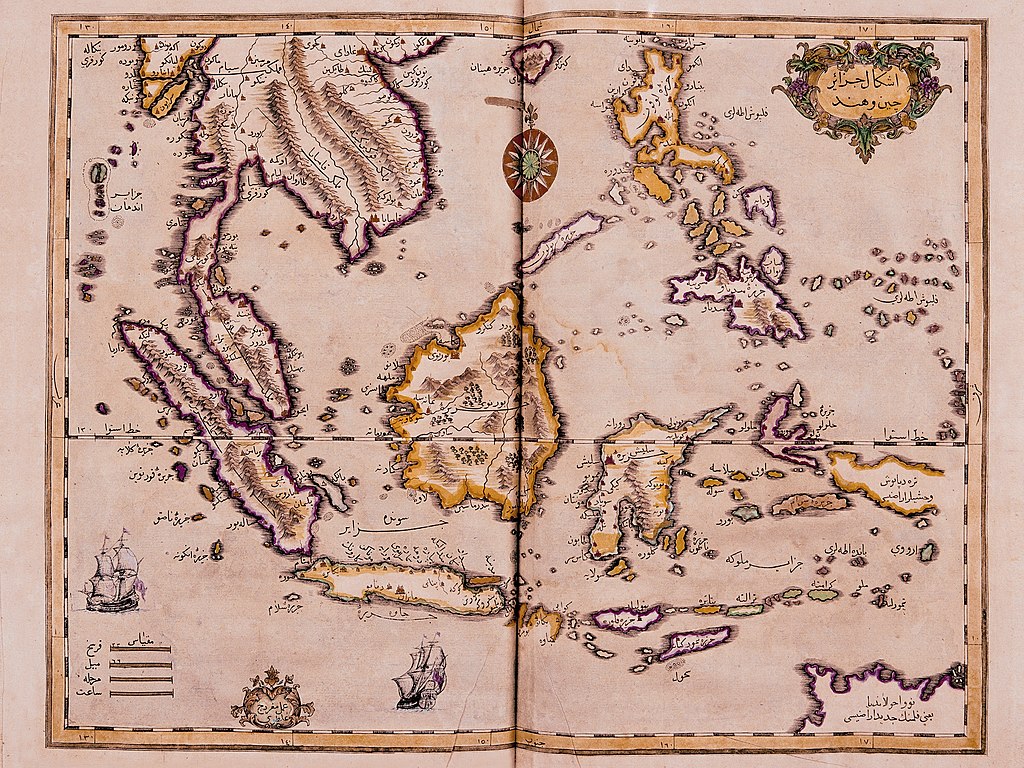
A map engraved in 1728 by Ibrahim Müteferrika
It’s not at random this area came under influence, then full colonization of the Netherlands. In 1602, the Dutch established the Dutch East India Company (VOC) and by 1610 this was one of the world’s most profitable colony.
The study of ancent Indonesian Naval History really commenced with studies done by historians of both Indonesian historians and foreign historians interested in writing Indonesian. Both largely used the mass of colonial documentation as its primary source. The dissertation of AB Lapian in 1987 “Orang Laut – Bajak Laut – Raja Laut: Sejarah Kawasan Laut Sulawesi Abad XIX” or “People of the Ocean – Pirates – Ocean Conquerer: The History of the Sulawesi Maritime Region on the 19th Century” was really one of the funding book about the study of this forgotten maritime history. He started that maritime communities were divided between sea peoples (those fishing and trading), pirates, and rulers (those with a prestige and military fleet of sort).
One of the primary missions of the Dutch has been to secure their own trade, and ensure VOC ships could bringe goods home and create profit. For this, the Dutch famously created the Indiaman, a powerful vessel which was both galleon and modern line warship. The Indiaman was clearly made to answer pirates mentioned at the time which infested these waters and plundered any passing by vessel. Among these famous pirates in Southeast Asia, those of the Sulawesi ocean, were the Sulu pirates, Mangindanao, and Balangingi.
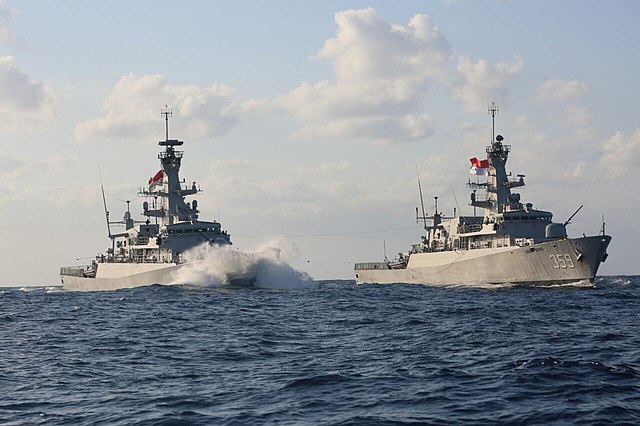
Fast forward and in 1814 is formed the KNIL (Koninklijk Nederlands-Indisch Leger or Royal Netherlands East Indies Army) naval branch was now a distinct part of the Netherland’s navy, which ships were stationed locally around Java. One main port (which infrastructure later profited to Indonesia), was Tandjong Priok, the port for Batavia. The KNIL could be seen as a succesor to the venerable VOC to the difference it was a colonial state army (also encompassing naval assets detached from the main Dutch Navy) and took part mostly in “police experditions” in the Indonesian area, between the first expedition to Palembang in 1819 to the Java War in 1825–1830, Padri War in 1821–1837, Expeditions to Bali 1846–1849, Expedition to the western section of Borneo 1850–1854, Palembang Highlands Expeditions 1851–1859, Banjarmasin War 1859-1867, Second Bone War 1859–1860, Dutch intervention in Lombok and Karangasem 1894, Kerinci Expedition in 1903 and Aceh War in 1873–1904.
It was quiet in WWI, with elements of the Royal Netherlands Navy and Government Navy (Gouvernementsmarine, created 1861) as naval support.
But in 1919, the Dutch government, despite a wave of pacifism at home, concede the Navy its worries about the rampant threat of Japanese expansionism, and rise of its fleet.
This following naval plan ordered the construction of two cruiser dedicated to the defense of the area (Java class), destroyers, and submarines as well as minelayers and gunboats. WW2 shook the East Indies up, as the KNIL was soundly defeated, despite allied reinforcements (ABDA) and despite the Japanese occupation, continued a guerilla war, helped by some local groups also affected by it. However the Japanese came with the same discourse of Asian liberation from colonialists power and this found echoes in some parts of the population, notably western-educated local elites developed prior to the war (as in French Indochina, British Malaysia and India, etc.). This planted the seeds of independence movements in the region which culminated with the the cold war wave of decolonization and creation of new countries, of which Indonesia war part.
Past Japanese capitulation, 1945, the allies retook the Dutch East Indies, and like France, the KNIL tried to re-establish Dutch control, resulting in a long ang gurelling campain in 1945-49. The KNIL with their Ambonese auxiliaries led vigorous and merciless “police action”, traduced by significant civilian casualties in a guerilla war which was won in the end by the independentists, in part due to the lack of domestic support. In fact the Indonesian navy was created before the country earned sovereignty by 27 December 1949. It helped supplying the guerillas and harrassing trade and supply routes for the KNIL. On 26 January 1950, a KNIL-staged coup failed and accelerated the dissolution of the federal Republic of the United States of Indonesia.
The KNIL was disbanded by 26 July 1950. Indonesian auxiliaries were given the option to join the newly formed Indonesian military but mutual distrust between these mostly Ambonese troops Republican military dominated by Javanese, led to clashes at Makassar and Republic of South Maluku rebellion. In the end, some 12,500 Ambonese KNIL personnel and families chose to move to the Netherlands to avoid retaliation. Still, 26,000 former local KNIL personal were incorporated into the new Indonesian Army. Some were also part of the naval branch and brought useful knowledge and training assets.
Independence and creation of the Navy
The Indonesian Navy was formally established on 22 August 1945, resulting in the Indonesian Proclamation of Independence. Its first name was the “Agency of the People’s Security Sea Service” or “Badan Keamanan Rakyat-Laut”, abbreviated as “BKR”. But it started rock bottom, with available traditional wooden ships and a few landing craft left by Japan, and to support the guerilla warfare led agains the KNIL until December 1949. The BKR was developed by the Sekolah Pelayaran Tinggi (Maritime College) and Dutch Naval Academy attached to the Indonesian Armed Forces (ABRI) on 5 October 1945, then “Angkatan Laut Republik Indonesia” (ALRI) used until 1970, and then “Tentara Nasional Indonesia Angkatan Laut” (TNI-AL), its actual acronym.
The independence war of 1945–1949 saw these meagre forces leading sea expeditions in the sea of Java, saw the establishment of naval bases and naval training schools, notably out of Java, and were used to expand the spirit of the proclamation, breaking naval blockades to obtain weapons and ammunition or medical supplies, in support of the Guerillas. This effort enabled a favourable situation for the resistance and its success in Bali, South Kalimantan, and South Sulawesi.
It is hard to pinpoint what ships types were used exactly, as this was clearly a “makeshift navy” with little to no official registers, and apart traditional wooden vessels, the leftover of the local IJN consisted in barges and landing crafts, such as the prolific Daihatsu type, but no major ship, either gunboat, patrol vessel or destroyer. They all had been sunk or badly damaged, constructive loss in the summer of 1945.
It’s really from 1949, that the navy started to expand with more modern vessels.
Early Indonesian Navy (1945-75)

The Indonesian Navy was initially equipped with ex-European and Australian vessels. It’s really from 1959, that more ships from the Soviet Union and East Europe arrived. The abortive 1965 coup saw a rapid decline in influence of the Navy, choosng the wrong side against the armed forces. The marine corps in particular was suspected of the coup. Lack of maintenance caused series of non-operational status.
So after Indonesia finally gained independence from the Netherlands on 27 December 1949 the young republic started with a moderate build up of her own naval forces. In December 1949, the first two modern vessels acquired were two ex-Australian Bathurst class minesweepers used in these waters, commissioned as corvettes. In 1950, two more, plus two sub-chasers, and all the Dutch Governmentsmarine and customs vessels which suirvived the war. This did not improved the patchwork catacter of the Navy but at least enabled to enforce some policing in what was a considerable coastline at the time. Relations with the Netherlands were still difficult but the Government recoignised its shipbuilding quality enough to order 17 patrol boats of the Alkai class.
During 1949-52 these seventeen patrol boats were built by Netherlands shipyards for Indonesia. From 1951 the former destroyer Tjerk Hiddes became the first major vessel of the new navy and its flagship, named Gadjah Mada, until the arrival of an ex-Soviet cruiser, Irian.
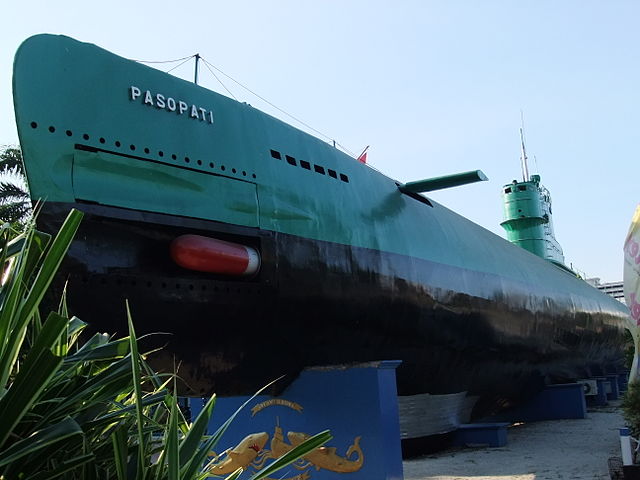
Preserved Pasopati, in Surabaya
In 1954, a programme for new construction was set up which included two destroyers and two corvettes ordered in Italy. Ten minesweepers and sail training vessel Dewarutji were built by German shipyards and in 1958 six patrol boats were received from Yugoslavia. Indonesia’s approach to the Eastern Bloc led to a massive naval build up. From 1959 to 1964, about one hundred naval vessels, including a cruiser, seven destroyers, seven frigates and fourteen submarines were received from the Soviet Union. None of these ships was involved in the 1963-66 Borneo Confrontation with Britain and Malaysia, only Indonesian marines and river craft took part.
In October 1965 when a military coup in Indonesia led by General Raden Suharto ended President Sukarno’s pro-Soviet policy, the situation changed completely. As the new regime refused to pay the $800m debt to Russia and many thousands of communists were massacred, supply of spares for the above mentioned ships was ended. For this reason and the lack of funds for maintenance, the Indonesian government in July 1970 announced its decision to sell all ships of Russian origin for scrapping. In 1973 a decision was taken to reduce Indonesia’s armed forces : the army from 300,000 to 200,000, air force and navy from 100,000 to 30,000 each. The marine corps which had been reduced from 16,000 to 5,000 was however increased in subsequent years to 12,000.
Stagnation Under Suharto

Parchim class vessel, the largest post-cold war extension of the Navy
As seen above, the aftermath of the abortive 1965 coup saw a huge decline in influence within armed forces and in particular the navy, with a suspected involvement in the coup of the latter, and particularly by the marine corps. A large portion the Soviet and East European vessels were starved of funds for maintenance and ended in non-operational status between the lack of spare parts and just maintenance personal and skills. The Marine Corps was reinforced by armoured and amphibious vehicles, naval aviation with ASW helicopters and Il-28 bombers in the 1960s under Soviet help, but in 1970, as diplomatic ties were served, TNI-AL obtained a single ex-US Navy destroyer escort plus ex-RAN fast attack craft of the K-16M class in replacement.
Inevitably this led to a mass of withdrawals and cancellations from 1965 to 1974. In 1975 the Surabaya Dockyard hosted what left of Sukarno’s navy, apparently all fully manned and if generally non-operational, they were maintained still as best as possible. The Soviets full support withdrawal on Sukarno’s departure led the ships suffering machinery and equipment shortages. Broken parts were left unreplaced, and engines won’t just start or run. Cannibalization was ordered in order to keep at least some major units operational, since Indonesia was still in dire need of home waters policing. Operational fell down to the two ex-USSR Riga class frigates, plus a single submarine, and apparently it was unable to submerge. She would sail out in the morning and back in the evening at least to keep some appareances.
The difficult Seventies
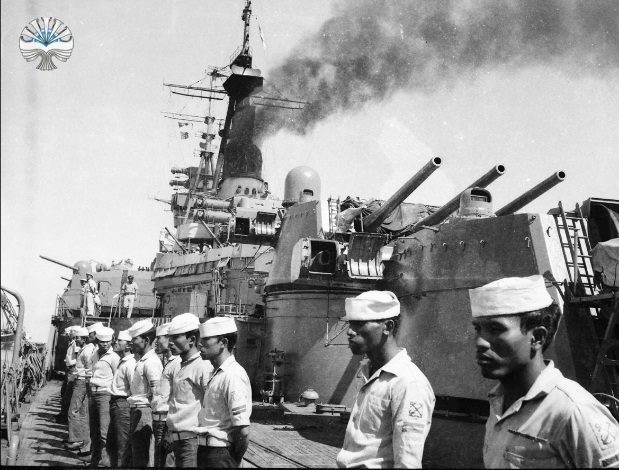
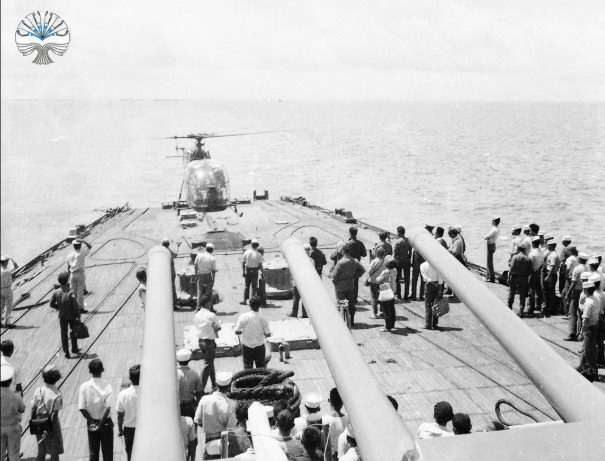
Aboard KRI Irian
During this period of rundown the navy found itself involved in the expansion of Indonesian territory. In August 1975 civil war broke out in the Portuguese colony of East Timor. By mid-September thirty Indonesian warships, including three to five frigates, were offshore and on 7 December they bombarded in support of marine and paratroop (1000 men each) landings to seize the island capital Dili. With the aid of local anti-communist guerrillas the coastal towns of Maubara and Baucau, the Ocussi Ambeno enclave and the offshore island of Atauro were all occupied before the year was out. East Timor became the sprawling archipelago’s twenty-seventh province.
After all ex-Soviet destroyers and most frigates had been sold for scrap new ships were ordered. During 1977-79 three new corvettes (light frigates) of the Fatahillah class were built in Netherlands yards. Four frigates, twelve minesweepers and several auxiliary ships were bought from the United States. The South Korean shipyard Korea Tacoma, Masan won a contract for four missile-armed fast attack craft.
Until the late 1970s, major replacements consisted only in four ex-US frigates acquired in 1974, refitted in Subic Bay, Philippines, from 1979 until 1982 and thus had an uncertain operational status beforehand. These was an upgrade program for a more balanced fleet limited to policing the archipelago and in 1978-92, submarines were purchased from the Federal Republic of Germany (West Germany) as well as light frigates from the Netherlands and Britain, plus fast attack craft from South Korea.
Severe budgetary constraints prevented new acquisition of any major weapon syste planned until the early 1990s and the simple overhaul and maintenance of newly acquired ships ate at this annual budget. Future projects however included an Indonesian-designed frigate and new major naval base at Ratai Bay (Lampung Province) but if the forst was cancelled, the second was partly made, amist further budget constraints. It’s really the 1978-92 period which saw the greatest renewal of the fleet, but still never nearly enough to achieve the nation’s goal of properly police its domestic waters and EEZ.
The 1980s transition
During the 1980s the Indonesian Navy was reinforced with no fewer than nine frigates , three former British ‘Tribals’ and six modernised Netherlands Van Speijks. Future acquisition of Netherlands De Ruyter class missile destroyers is also planned when these are phased out of service with the Netherlands Navy. There are also new fast attack craft of the Lürssen ‘FPB 57’ type built for the navy and the customs service. Two modern ‘Alkmaar’ type minesweepers were commissioned as well as six Korean-built landing ships of the ‘Teluk’ class.
The start of the 1980s signalled the development of TNI-AL and promulgation of the Indonesian Economic Exclusive Zone, which offered new resources but also needed more protection as a result. The Indonesian Navy at the time was far from answering these new demands, and a development and management program was initiated, starting with proper forces maintenance and the integrated fleet weapons system (SSAT) integrating the proper naval assets but also aircraft, the Marine Corps and the naval bases. This new structure also integrated logistic support for projection power.
The 1980s also saw an effort in armament through the purchase of Harpoon systems and the MK-46 torpedo.
Post-Cold War Modernization
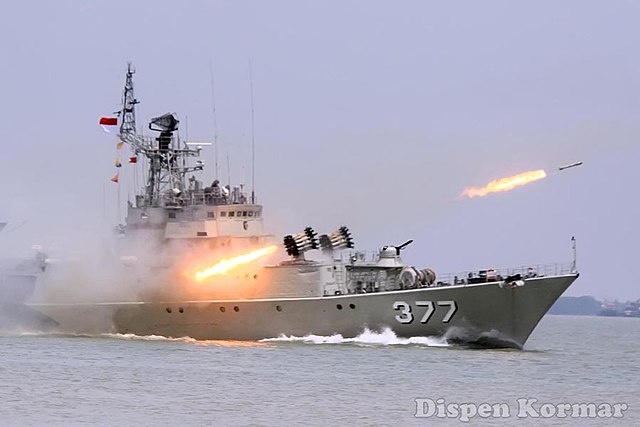
In 1992 the Indonesian government announced plans to acquire thirty-nine used ships of various types from the navy of the former German Democratic Republic (East Germany). The navy produced numerous small coastal craft in national shipyards as well. As of 1992, the fleet was composed of more than sixty ships and numerous smaller vessels.
In 1993 Indonesia purchased sixteen corvettes , twelve landing ships and nine minesweepers of the former East German Volksmarine from Germany , one of the largest bloc resales of used warships in recent years. The transaction has been plagued by cost overruns. The deal includes extensive training of Indonesian personnel in Germany. The names of all Indonesian ships are preceded by the designation KRI (Kapalperang Republik Indonesia) which means ‘Warship of the Republic of Indonesia’.
In 1995 some 1000 men served in the naval air arm with twenty three aircraft and twenty-eight helicopters. In 1995 there were over forty-six helicopters (Alouette III, Bo-105, AS-332 Puma, Westland Wasp), many based on ships, and as many as fifty-four aircraft. Personnel strength reached 41,000 officers and men, including 13,000 marines and 1000 naval aviation personnel.
Its principal bases are Gorontalo, Kemayoran (Jakarta) and Surabaya on Java. A new naval base was built at Teluk Ratai on South Sumatra, costing a reported £3bn to replace that at Surabaya and completing in 1991. The nine local shipyards are able to build small surface units.
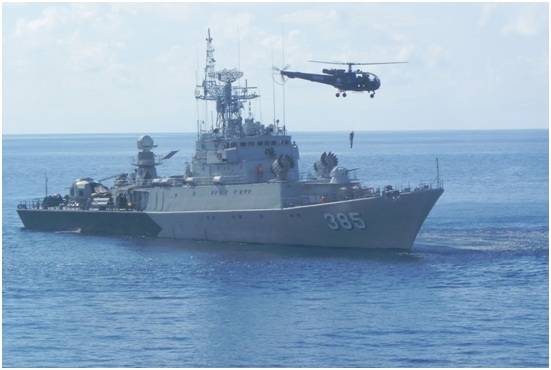
The fall of the Soviet Union made available a tempting park of advanced naval weaponry at very low coast, ans since Thailand started to threaten Indonesia’s preeminent regional position, with the acquisition of two corvettes in 1983, Indonesia answered 1984 and 1986 by purchasing a total of seven frigates, quite an improvement in capability. PBut it’s really the Thai order of a light aircraft carrier in 1992 that makes this local naval race bounce again:
From 1993, Indonesia purchased thirty-nine ships of various types: Sixteen corvettes (East German navy) as their centerpiece, but the 16 Pattimura/Parchim class were re-engined in 2005 to keep up with the difficult tropical conditions they never has been tailored for. This gave them a new lease on life. The rest of the fleet counted a rejuvenated park of numerous small coastal craft some of which were built in national shipyards, and the others maintained there as well. Shipyard PT PAL notably produced patrol boats under a German license. In 2009 Indonesia had even its fourth landing platform dock vessel, built under South Korean supervision.
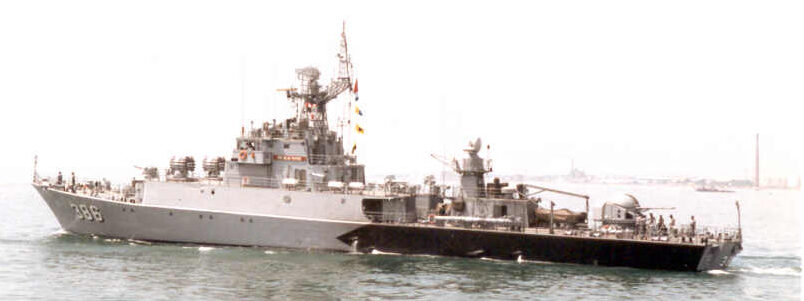
The main deterrence is formed by its two Type-209 submarines, and there is a standup amphibious force thanks to 14 LSTs and 9 MCMs to take part in peacekeeping operations within the ASEAN. They were mediatized as being deployed during high profile anti-drug/anti-piracy duties with their heavy weapons removed before transfer, but still capable of reconversion and taking part in any force projection. Therse is still an erosion of Indonesia’s position as regional leader, a far cry from its position in the 1960s. It was partly due to the virtual stagnation of the Indonesian naval forces, unable to “show the flag” as an influence recall. Until the early 1990s modernization was done peacemeal. It’s really the purchased of thirty-nine ex-German ships that signaled a true rebirth and the fire is maintained due to the post-2015 regional context, with Chinese PLAN expansion and the Chinese Government’s new agressive policy in the region, as well as the reinforcement in response of rregional powers, notably those around the contested China sea.
The Indonesian Navy Today
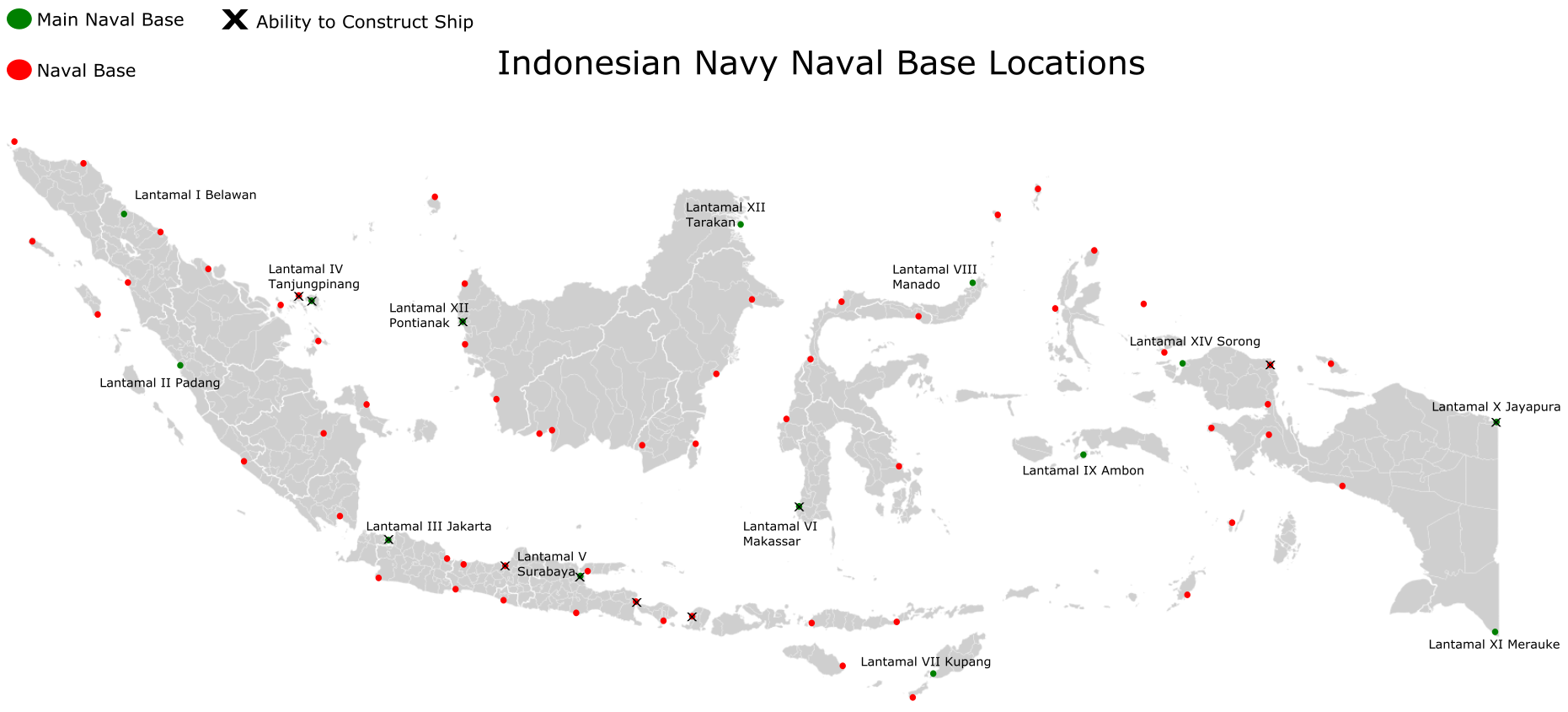
Indonesian Naval Bases and shipyards.
The navy’s today mission is abut the same as before, act as a territorial force patrolling the extensive coastline. It was far from any prospect of being a “blue water navy”, and was content with the status of green-brown navy. The minimum capability was seen as sea denial, which dictated modernisation via the acquisition of really high technology ships, and both the Fatahilah class corvettes, “Van Spijk” class frigates and Tripartite class minehunters were keen to procure. The ex-Yugoslavian training ship KRI Kihajar Dewantar and new South-Korean “Patrol Ship Killer—Missiles” as well as Tacoma class LSTs were later reinforced by the deterrence brought by ex-Tribal class vessels and moreover the supreme sea denial asset of the navy today, German Type 209 class submarine.
(More to come)
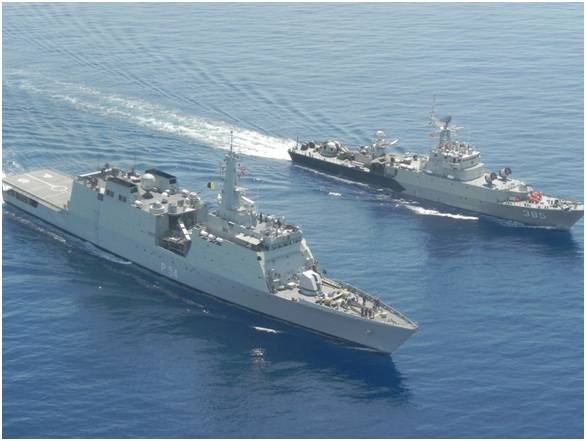
KRI Teuku Umar
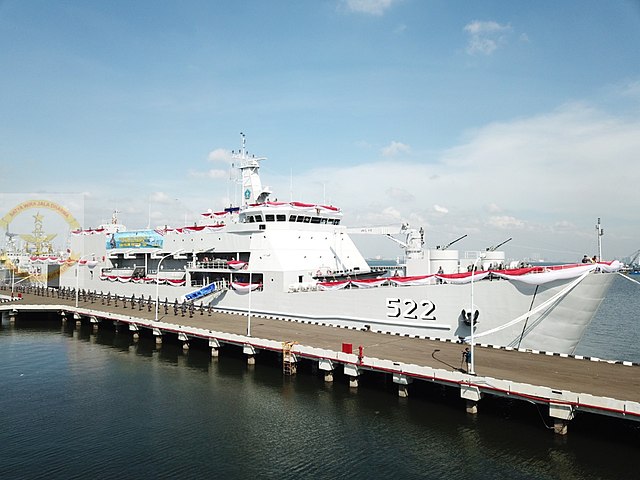
KRI Teluk Youtefa 2021
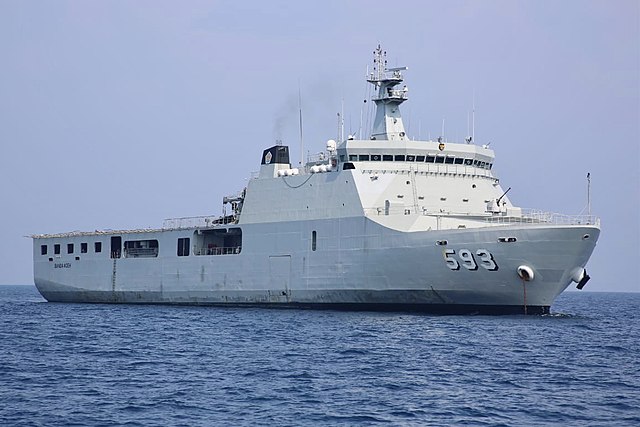
Kri Banda Aceh 2018

The impressive camouflage sported by KRI KRI Pati Unus (384) (reddit)
Organization
-The main naval base at Surabaya (Jawa Timur Province) is today the main port and arsenal of the fleet.
-The national shipyard, PT PAL for the moment is only capable of delivering FPB-57 class patrol boats, but it’s a far cry of the 1990s planned domestic frigates.
-The navy comprised headquarters staff at Jakarta (COS) with two fleet commands, Eastern (Surabaya) and Western (Jakarta), as well as the Marine corps, Air arm, and military sealift command.
44,000 personnel were registered by 1992, notably 13,000 marines, still a strong force.
The 1985 reorganization of the military made significant changes in the former territorial commands of the navy, which were eliminated from the structure altogether, with the service represented on the KODAM staff by a senior liaison officer. The navy territorial commands were replaced by Eastern Fleet and Western Fleet–Armadas. The Navy fleets split the Western Fleet corresponding to KODAMs I through IV and VI and with the Eastern Fleet corresponding to KODAM V and KODAMs VII through IX.
In the early 1990s, the ships started to be deployed in mobile flotillas, dispatched where needed on any theater and area, and no longer attached to a specific one. These deployment flotillas were the eastern, western, and central groups, most often concentrated in the west and close to Belawan in Sumatera Utara Province as well as Tanjungpinang in Riau Province near Singapore and near Manado (Sulawesi). This organization was confirmed and refined in the 1990s. One mission was patrolling the strategic straits in and out of the Indian Ocean, notably Malacca. The other mission was against smuggling and illegal fishing notably off the Natuna Islands and Kalimantan-Irian Jaya. The general staff anounced for this the creation of smaller naval bases in isolated areas. This activity ibcreased with the flow of refugees from Southeast Asia, and especially to the Natuna Islands.
Indonesian Naval shipbuilding
The naval shipyard P.T. PAL started asa private one but wa eventually turned over to the civilian government and it was based, as its suppliers, to Surabaya, as main center for constuction but also repair and generic industrial center. It developed and implemented improvements for technical upgrades and both new skills in military and commercial repairs, including for foreign navies (like the USN). Small craft construction facilities were in Jakarta and Manokwari (Irian Jaya Province) as well as Semarang (Jawa Tengah Province) as well as Ambon (Maluku Province).
Because of severe budgetary constraints imposed by the national government, no near-term acquisition of major new weapons systems was planned by the navy in the early 1990s. Continual overhaul of foreign-origin ships was perceived as the primary method to retain an operational fleet. Future projects included plans for an Indonesian-designed frigate and construction of a major naval base at Ratai Bay, Lampung Province. The immense costs involved, however, made achievement of these ambitious goals unlikely.
Situation and founding texts
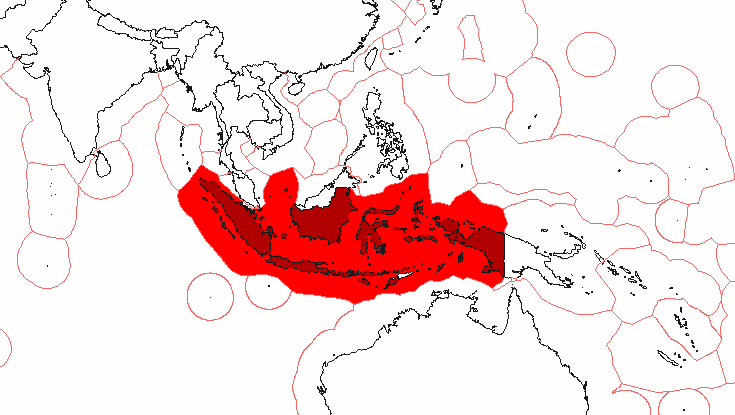
When independence was, sovereignty gained, laws were edited soon concerning the seas and inspired by other texts created for other archipelagic states. Indonesia will still grant and guarantee international passage and for domestic security the declararation of December 13, 1957, fixed the territorial waters of the Republic. Waters between the islands came within Indonesia’s sovereignty on a 12 miles limit based on a straight baseline from the islands outermost points instead of a generic 200-mile-EEZ. It was later confirmed by International Convention on the Law of the Sea, and ratified by the Indonesian Government on October 18, 1983 (Act No. 5) as the legal basis for the Indonesian EEZ in case of any international disputes. Read more and see the map. So far these waters hosts areas designated as the Indian Ocean (IHO Sea Area), South China and Eastern Archipelagic Seas (General Sea Area), South Pacific Ocean (IHO Sea Area), North Pacific Ocean (IHO Sea Area), Philippine Sea (IHO Sea Area), South China Sea (IHO Sea Area), Malacca Strait (IHO Sea Area), Andaman Sea (IHO Sea Area).
Indonesian Marines
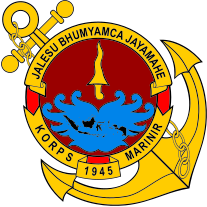 The Indonesian marines (created 15 November 1945) were organized into two brigades: Jakarta and Surabaya, so linked to the eastern and western fleets. They have access to a mostly well maintained ex-Soviet vehicle park, light amphibious tanks, armored personnel carriers, and AA guns. Some elements were also occasionally attached to KOSTRAD for operational combined operations.
The Indonesian marines (created 15 November 1945) were organized into two brigades: Jakarta and Surabaya, so linked to the eastern and western fleets. They have access to a mostly well maintained ex-Soviet vehicle park, light amphibious tanks, armored personnel carriers, and AA guns. Some elements were also occasionally attached to KOSTRAD for operational combined operations.
As of today, it is comprising the following structure:
Korps Marinir (pink berets)
-Infantry (Infanteri, INF)
-Amphibious Reconnaissance (Intai Amfibi, IAM)
-Artillery (Artileri, ART)
-Cavalry (Kavaleri, KAV)
-Communications (Komunikasi, KOM)
-Combat Engineers (Zeni, ZNI)
-Transport, Logistics and Ordnance (Angkutan dan Peralatan, ABP)
> Marine Special Forces Training Center Grati, Pasuruan.
> Marine Amphibious Forces Training Center training Marine personnel in amphibious operations, at Gunung Sari, Surabaya
> Eight Marine Combat Training Centers (Pusat Latihan Tempur Marinir) which consists of following training centers:
-3rd Marine Combat Training Center Grati (Pasuruan)
-4th Marine Combat Training Center Purboyo (Malang)
-5th Marine Combat Training Center Baluran (Situbondo)
-6th Marine Combat Training Center Antralina (Sukabumi)
-7th Marine Combat Training Center Lampon (Banyuwangi)
-8th Marine Combat Training Center Teluk Ratai (Pesawaran)
-9th Marine Combat Training Center Dabo Singkep (Lingga)
> Damar Island Marine Combat Training Center (Thousand Islands)
> Marine Amphibious Landing and Combat Readiness Training Center
> Marine Specialized Office Training Center (Pusat Latihan Jabatan Khusus) for specialized qualification courses.
They took part in the Indonesian National Revolution, Operation Trikora, Gunung Gede, Indra, the Indonesia-Malaysia confrontation, Permesta and PRRI rebellions, Operation Alugoro, Papua conflict, Operation Seroja, Maluku sectarian conflict management, 1990–98 Indonesian military operations in Aceh, Maluku sectarian conflict (1999–2000) and Operation Tinombala (2016–present)
Vehicles:
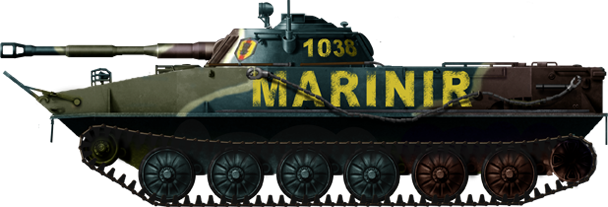
PT-76 of the Indonesian Marines.
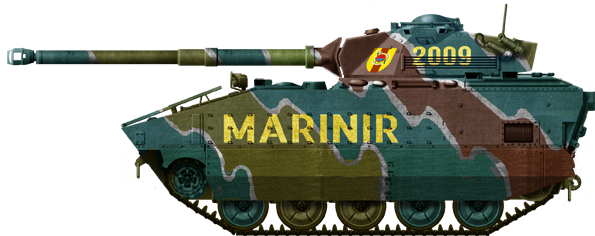
AMX-10P PAC-90 of the Indonesian marines, more recent, 37 were acquired in the 1990s.
In addition to the 86 PT-76 and 37 AMX-10P/90 (only 10 of the PAC-90, the rest are 20 mm IFVs), the Marinir also deploys 128 BTR-50 (planned for replacement), 79 BTR-3F, 23 BMP-2, 77 BMP-3s, 15 LVTP-7A1, 5 BTR-4, 12 BTR-80 as for the armoured ones only, but also the specialized BREM-Ch, BREM-L and K-61, PTS and a large variety of trucks and cars, including slovak-built armored Tatrapan 8×8 vehicles, Kerametal Aligator 4×4, ILSV armored APC and P6 ATAV for spec ops.
Indonesian Naval Air Force
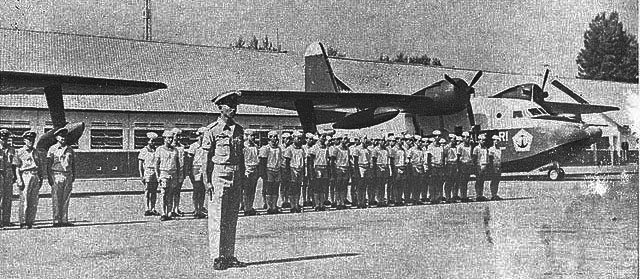
The navy has maintained a small air arm since 1958 (HQ Surabaya) andis limited to 1,000 personal in the 1990s. tasked for SAR, naval reconnaissance and coastal patrol duties. It is equipped with three squadrons of light airplanes, several transports and helicopters.
Naval aviation was supplemented gained N-22 Nomad patrollers from Australia, Wasp ASW helicopters from UK, IPTN Cassa, as well as the Super Puma and BO-105 helicopters.
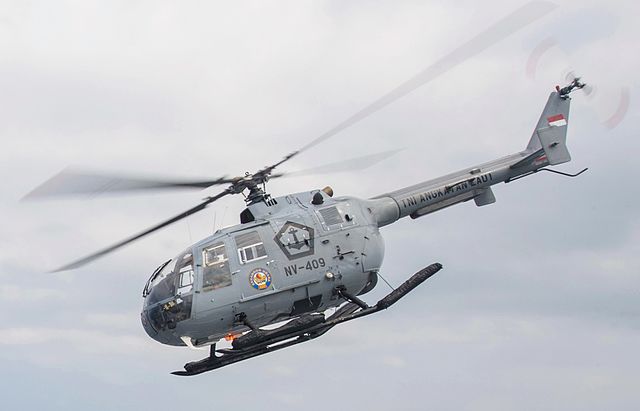
Future Plans
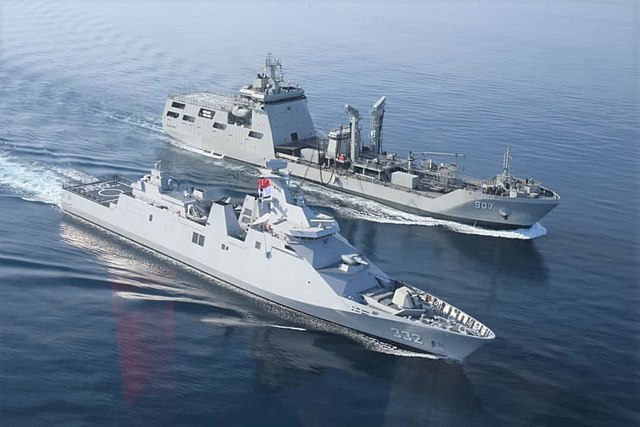
(to come)
Read More
Books
Links
https://en.wikipedia.org/wiki/List_of_former_ships_of_the_Indonesian_Navy
http://papers.iafor.org/wp-content/uploads/papers/acah2018/ACAH2018_41057.pdf
https://www.icwa.in/show_content.php?lang=1&level=3&ls_id=4945&lid=1898
http://www.navypedia.org/ships/indonesia/ino_es_fatahillah.htm
http://www.navypedia.org/ships/indonesia/ino_es_kapitan_pattimura.htm
http://www.navypedia.org/ships/indonesia/ino_es_patimura.htm
https://en.wikipedia.org/wiki/Martadinata-class_frigate
https://en.wikipedia.org/wiki/Fatahillah-class_corvette
https://irp.fas.org/world/indonesia/alri.htm
https://www.spsnavalforces.com/story/?id=312
Naval Strategies: How Indonesian Navy Operates to Fight Maritime Crimes
https://www.wdmmw.org/indonesian-navy.php
https://www.globalsecurity.org/military/world/indonesia/alri-suharto.htm
https://en.wikipedia.org/wiki/Indonesian_Navy
http://www.navypedia.org/ships/indonesia/ino_index.htm
About Irin on jejaktapak.com
Irian on lastzombieisland.com
Nomenclature of Indonesian classes
 KRI Gadjah Mada (1951)
KRI Gadjah Mada (1951)
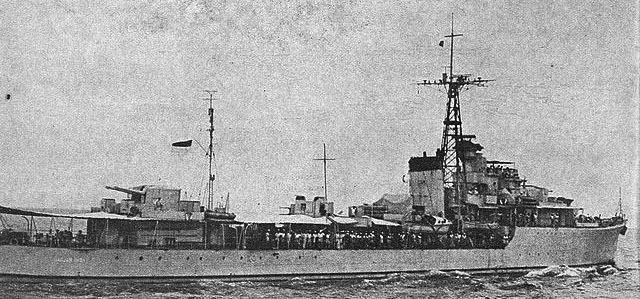
Ex HMS Non Pareil (Denny, launched 1941), Tjerk Hiddes as transferred to the Dutch in 1942. She was acquired in 1951, became flagship of the Indonesian Navy until stricken and BU in 1961, replaced by KRI Irian. N class destroyer she was modernized in 1945, and has the following: Three twin 120mm/45 CP Mk 19, a quad 40mm/39 Mk 7, four single 20/70 Mk 3, two triple 533mm TT, 4 DCT, 2 DCR (45 DC) and the type 271, type 285, type 291 radars and type 124 sonar.
 IS Irian (1962)
IS Irian (1962)

An ex-Sverdlov class cruiser (launched 1950), Ordzhonikidze famously went in 1956 to Portsmouth with Nikita Khrushchev and Nikolai Bulganin aboard for a state visit. She was to be sold to the PLAN but the deal with the PRC fell through after the Sino-Soviet Split, and Ordzhonikidze, now surplus to the Soviet fleet requirement which wanted only missile ships, was sold to Indonesia in 1962.
KRI Irian arrived in Surabaya in October 1962, decommissioned from the Soviet Navy on 24 January 1963 and recommissioned the same day. After the abortive coup by the 30 September Movement and arrival of President Suharto, Irian was used as a floating detention center in Surabaya for suspected communists and as all ties deteriorated, spare parts were lacking for her proper maintenance.
Sources diverged around her fate as there is little official evidence. The lack of maintenance was such for some there was some flooding and she was in any case, non-operational. So despite her commission, her active service was close to nil. Admiral Sudomo as new COS sold her to a Taiwanese demolition company in 1972. However another source pretends she was sold to Japan also for scrapping. In any case, more impressive than a destroyer, she was a sitting monument bearing the flag at least for the appearances all along.
 Siliwangi class destroyers (1959)
Siliwangi class destroyers (1959)
Siliwangi, Singamanga Radja, Sandjaja, Sawuggaling, Sultan Iskandarmuda, Diponegoro, Brawidjaja
Skoryy class ships acquired earlier in 1959, as a completement to Gadjah Mada. Four of these were stricken in 1971 and used for spare parts for the remainder three, which themselves were stricken in 1973 again due to poor maintenance. No modifications compared to the original vessels.
 Iman Bondjol class Frigates (1956)
Iman Bondjol class Frigates (1956)
Iman Bondjol, Surapati

An Italian Almirante Clemente class for Venezuela at OTO, Ansaldo Leghorn, laid down in January 1956, completed in 1958 initially for Venezuela but resold in 1956 to Indonesia. They had three twin 30 mm AA guns and three twon 20 mm AA guns, were never modernized and stricken in 1978.
 Sudarso class Frigates (1964)
Sudarso class Frigates (1964)
Jos Sudarso, Slamet Rijadi, Ngurah Rai, Monginsidi, Lambung Mangkurat, Hang Tuah, Kakiali, Nuku
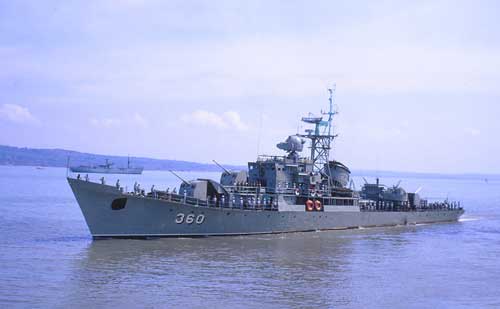
Kri Nuku src
Riga class, soviet-built frigates acquired in 1964. They were the Jos Sudarso (ex-Sarych) stricken 1986, Slamet Rijadi (ex-Puma), stricken 1973, Ngurah Rai (ex-Korsak), stricken 1974, Monginsidi (ex-Grizon), stricken 1971, Lambung Mangkurat (ex-Aist), stricken 1986, Hang Tuah (ex-Zubr) stricken 1971, Kakiali (ex-Bizon) stricken 1985 and Nuku (ex-Pelikan), stricken 1971. No change compared to the originals, Monginsidi was already in reserve by 1969, the remainder were also in reserve and stricken from 1971 due to poor maintenance. Jos Sudarso and Kakiali likely survived until the 1980s due to the spares recuperated from the stricken ships.
 Samakidun class Frigates (1973)
Samakidun class Frigates (1973)
Samadikun, Martadinata, Mongisidi, Ngurah Rai
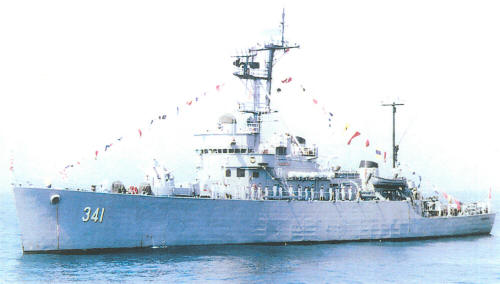
Claud Jones class Frigates transferred from the USN acquired in 1973-74. Appearance as the regular Claud Jones class (blueprint). They were the Samadikun (ex-John R. Perry), Martadinata (ex-Charles Berry), Mongisidi (ex-Claud Jones) and Ngurah Rai (ex-McMorris). No change, they had two 76mm/50 Mk 34 guns and two triple 324mm Mk 32 TTs, as well as 2x 24 tubes 178mm Hedgehog Mk 11 ASWRL and a DCR, plus the SPS-10, SPS-6E, SPG-52 radars, SQS-4 sonar, WLR-1 ECM suite. Well maintained, they were actived until discarded in 2005-2006.
 Fatahilla class Frigates (Corvettes) (1977)
Fatahilla class Frigates (Corvettes) (1977)
Fatahilla, Malahayati, Nala
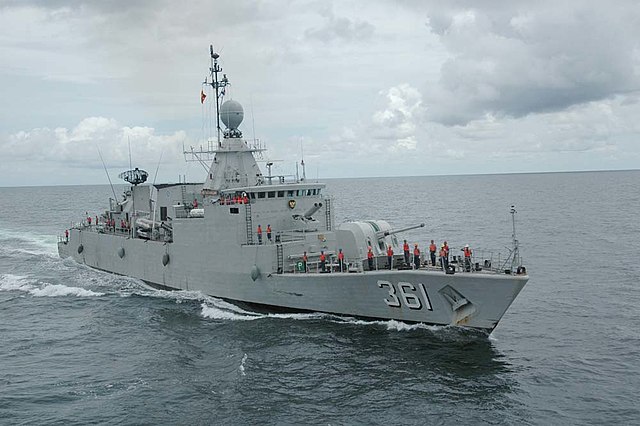
Dutch tailor-built vessel, built by Wilton-Fijenoord, Schiedam, Netherlands, launched 1977-79, in service 1979-80 and still active as of today. First Indoiensian vessels powered by a combined diesel or gas, with a single Rolls-Royce Olympus TM-3B gas turbine and two MTU 16V956 TB81 diesel engines. Her armament was extensive for her size, with a main Bofors 120 mm L/46 gun one of two Bofors 40 mm L/70 gun, two Rheinmetall Rh-202 20 mm guns, four Exocet MM 38 anti-ship missiles canister, one Bofors 375 mm twin anti-submarine rocket launcher and two triple Mk 32 launchers for 324 mm torpedoes. Nala lacked these ones but had two Bofors 40 mm instead. Only KRI Nala had an helicopter with a flight deck and telescopic hangar.
⚙ specifications |
|
| Displacement | 1,200 lt standard, 1,450 lt fully loaded |
| Dimensions | 84 x 11.10 x 3.30 (275 ft 7 in x 36 ft 5 in x 10 ft 10 in) |
| Propulsion | 2 shafts CODOG RR Olympus turbine, 21,000 kW, 2× MTU diesels 6,000 bhp (4,500 kW) |
| Speed | 30 knots (56 km/h) |
| Range | 4,250 nautical miles (7,870 km) at 16 knots (30 km/h) |
| Armament | 1× Bofors 120 mm/46, Bofors 40 mm/70 gun,2x 20 mm, 4 × Exocet MM 38, Bofors 2x 375 mm ASWRL, 2×3 Mk 32 launchers 324 mm TTs, 1 helicopter |
| Sensors | Terma’s SCANTER 4100/6000 |
| Crew | 89 |
 Ahmad Yani class Frigates (1986)
Ahmad Yani class Frigates (1986)
KRI Ahmad Yani, Slamet Riyadi, Yos Sudarso, Oswald Siahaan, Abdul Halim Perdanakusuma, Karel Satsuitubun
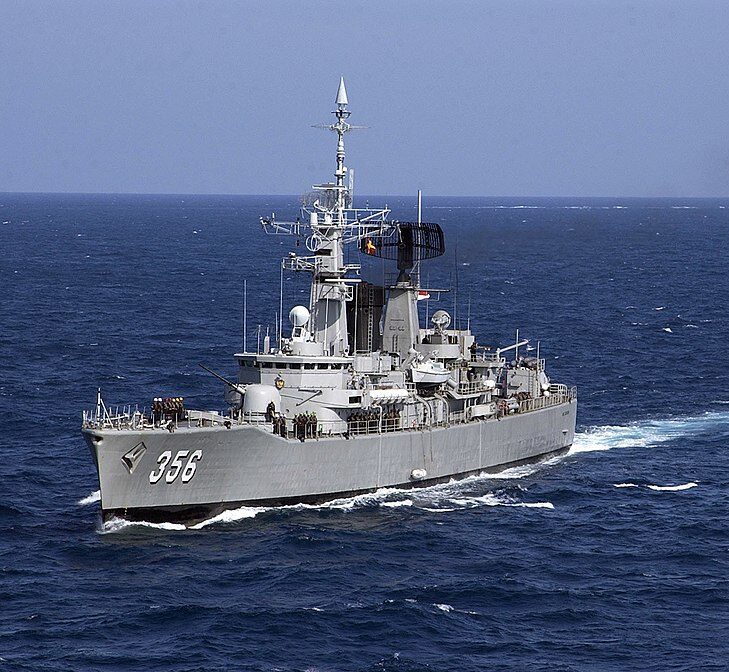
Similar to Van Speijk class Frigates, acquired by the Indonesian Navy in the 1980s and the originals were licence-built versions of the British Leander class.
In 1992, KRI Ki Hajar Dewantara and KRI Yos Sudarso, KRI Teluk Banten intercepted the Portuguese ship Lusitania Expresso in East Timor. Colonrl Widodo (deputy assistant of the Indonesian Navy´s Eastern Fleet) stated that Expresso traveled two to three nautical miles (3.7 to 5.6 km; 2.3 to 3.5 mi) into Indonesian territory, ordering Captain Luis Dos Santos to leave immediately, which was done. Their steam turbines were replaced by new diesel engines, but no other changes were made.
 Tiyahahu classs Frigates (1985)
Tiyahahu classs Frigates (1985)
Hasanuddin, Wilhelmus Zakarias Yohannes (ex-Gurkha), Martha Khristina Tiyahahu
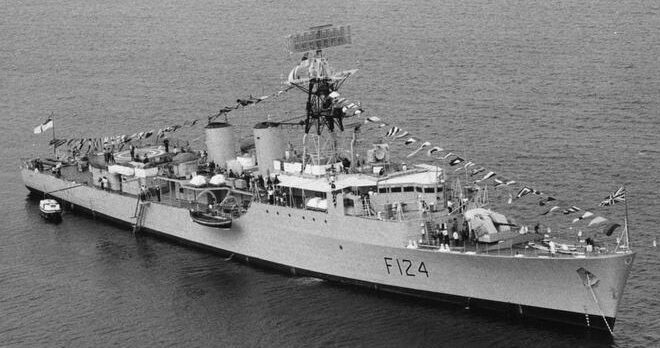
Three ships from the 1958 UK Tribal class, so quite elderly when transferred in 1984, as the ex-Tartar (launched September 1960) as KRI Hasanuddin (stricken 2000) and ex-Zulu (3 July 1962) as KRI Martha Khristina Tiyahahu, also stricken 2000. After a refit at Vosper Thornycroft’s Woolston in Southampton shipyard, the first was delivered on 22 January 1986, commissioned into the Indonesian Navy on 3 April 1986 (named after a sultan who fought the Dutch). Her name was later given to a Dutch-built Diponegoro-class corvette. The second was named in honour of Martha Christina Tiahahu, who fought against Dutch colonial forces. She was also refitted as Vosper Thornycroft’s Woolston yard and recommissioned on 2 May 1985. Specs as the Tribals.
 KRI Hsar Dewantara (1980)
KRI Hsar Dewantara (1980)
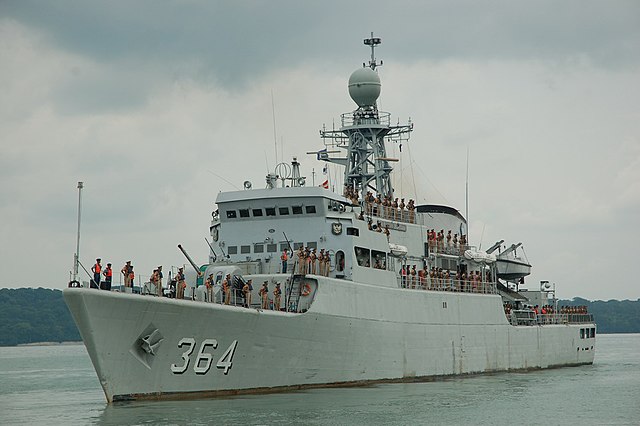
Training frigate Built in Yugoslavia, tailored for the needs of the Indonesian Navy. Built in 1980 she was decommissioned in 2019, planned to be preserved as museum ship.
Specs: 96.7 m (317 ft) x 11.2 m (37 ft) x 4.8 m (16 ft) for 2,050 long tons (2,080 t) FL. CODOG; Rolls-Royce Marine Olympus TM3B gas turbine 24,525 horsepower (18.288 MW), two MTU 16V 956TB92 diesel engines 11,070 metric horsepower (8.14 MW), two shafts and controllable pitch propeller, 26 knots (48 km/h)/20 knots (37 km/h). Range 4,000 nautical miles (7,400 km)/18 knots (33 km/h), crew of 89 personnel, with 14 instructors and 100 cadets. Armed with two MM38 Exocet missile (4 missiles), single Bofors 57 mm L/70 Mk 1 naval gun, two 20 mm Rheinmetall Mk 20 Rh-202 autocannons and later Mistral SAM, two 533 mm TTs (SUT torpedoes), GM 101/41 depth charge projector, two twin 128 mm flare launchers, helipad at the stern and davits for two LCVPs. She is equipped also with a classroom, additional training bridge, navigation room, radio room, and various accommodations for cadets and instructors.
 Bateng class Corvettes (1949)
Bateng class Corvettes (1949)
ww2 aussie minesweepers
 Pattimura class corvettes (1956)
Pattimura class corvettes (1956)
Italian built
 Kapitan Patimura class Corvettes (1993)
Kapitan Patimura class Corvettes (1993)
Parchim II Type
(More to come)
 Tjakra class Submarines (1959)
Tjakra class Submarines (1959)
KRI Tjakra, Nanggala, Nagabanda, Trisula, Nagarangsang, Tjandrasa, Alugoro, Tjundamani, Wijajadanu, Pasopati, Hendradjala, Bramastra

These were twelve ex-soviet or polish Whiskey class submarines, all transferred in 1959 as relations with USSR was at top level. Specs as the originals, but upgraded with the Flag radar, Tamir-5L, Feniks sonars, and Nakat ECM suite, Project 613. Pasopati and Bramastra were refitted with new batteries from UK. The latter were discarded in 1990 and the other in 1985, all the rest in 1972-74. They formed at the time one of the strongest submarine force in the region quite a deterrent. Unfortunately under Suharto, they were starved of parts while maintenance dropped to an all-out low.
 Cakra class submarines (1980)
Cakra class submarines (1980)
KRI Cakra, Nanggala
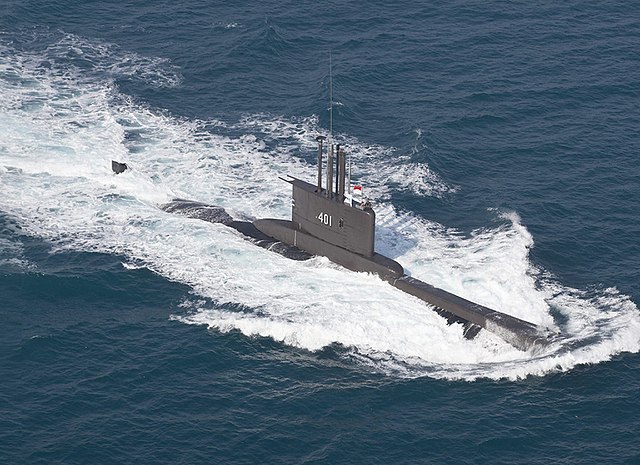
Type 209 submarines (same specs) built at Howaldtswerke, Kiel, West Germany, laid down 25.11.1977, launched 11.9.1980, comp. 19.3.1981 and in service until planned decommissioned in 2019.
They carry SUT Mod. 0 torpedoes and in 2006, Cakra and 2012 for Nanggala they received the new CSU-3-2 sonar suite, the Sub-Harpoon SSM (4), the LOPAS 8300 sonar suite and MSI 90U CCS. KRI Nanggala was declared missing on April 21, 2021, declared sunk on the 24th, after recovery of objects believed to have been part of her, including a torpedo rectifier. Causes unknown and wreck not localized yet. Both were replaced by the new South-Korean built Nagapasa class (2017).
 Nagasapa class submarines (2017)
Nagasapa class submarines (2017)
KRI Nagapasa, Ardadedali, Alugoro, iv, v, vi
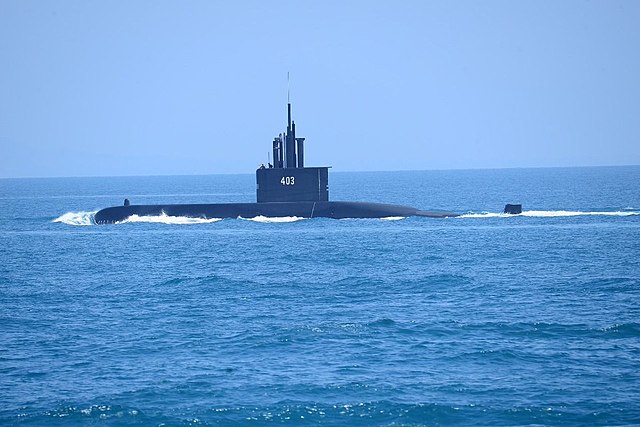
They are based on the German Type 209/1400 Chang Bogo design, first two built by Daewoo and carry the same SUT Mod. 0 torpedoes as the previous Cakra type. An agreement was made for a transfer of technology to Indonesia, and thus, if Nagapasa like Ardadedali were ordered to Daewoo, Okpo, launched 24.10.2016 and commissioned on 25.4.2018, the next Alugoro (405) and following unnamed IV-VI boats are built at PT PAL, Surabaya, ordered 2016, started 11.4.2019 for a completion in 2021 for Alugoro and the following in 2024-2026 being renamed since.
Specs: 1,400 tons, 61.3 x 6.3 x 5.5 m (201 ft 1 in x 20 ft 8 in x 18 ft 1 in). 4x MTU 12V493 diesel generators 3,700 kW (5,000 shp), 1 propeller, 11/21.5 knots range 11,000 nmi (20,000 km; 13,000 mi) at 10 kn surfaced, 400 nmi/4 kn submerged, endurance 50 days, test depht 500 m (1,600 ft) crew 40, armed with 8×533 mm (21 in) TTs (14 Black Shark torpedoes).
 Indonesian Landing Ships
Indonesian Landing Ships
LST 511 type:
Japanese LST Types:
(More to come)
 Teluk Semangka class LSTs (1981)
Teluk Semangka class LSTs (1981)
Built in SKorea
 Gilimanuk class Medium Landing Ships (1933)
Gilimanuk class Medium Landing Ships (1933)
Ex-East German Frosch I acquired 1993-94
 Cirebon class Logistic Support Ships (1993)
Cirebon class Logistic Support Ships (1993)
Frosch II type
 Indonesian landing Crafts
Indonesian landing Crafts
Yugoslav LCT
Ex US LCI
Ex US LCU
Kupang class ULC
 Indonesian Fast Attack Crafts
Indonesian Fast Attack Crafts
-Jaguar Type
-P6 Type
-Komar Type
-PSK Mark 5
 Barakuda class OPVs (1958)
Barakuda class OPVs (1958)
Kronstadt Type
 Inonesian Sub-chasers
Inonesian Sub-chasers
PC 173 ft type
 Indonesian Large Patrol Crafts
Indonesian Large Patrol Crafts
-Kraljevica type
-Klelabang class

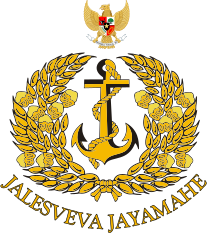
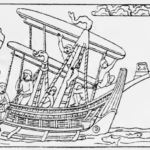
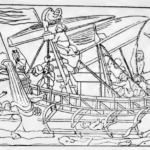
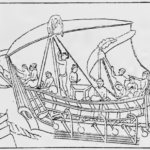

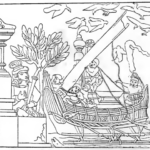
 Latest Facebook Entry -
Latest Facebook Entry -  X(Tweeter) Naval Encyclopedia's deck archive
X(Tweeter) Naval Encyclopedia's deck archive Instagram (@navalencyc)
Instagram (@navalencyc)





 French Navy
French Navy Royal Navy
Royal Navy Russian Navy
Russian Navy Armada Espanola
Armada Espanola Austrian Navy
Austrian Navy K.u.K. Kriegsmarine
K.u.K. Kriegsmarine Dansk Marine
Dansk Marine Nautiko Hellenon
Nautiko Hellenon Koninklije Marine 1870
Koninklije Marine 1870 Marinha do Brasil
Marinha do Brasil Osmanlı Donanması
Osmanlı Donanması Marina Do Peru
Marina Do Peru Marinha do Portugal
Marinha do Portugal Regia Marina 1870
Regia Marina 1870 Nihhon Kaigun 1870
Nihhon Kaigun 1870 Preußische Marine 1870
Preußische Marine 1870 Russkiy Flot 1870
Russkiy Flot 1870 Svenska marinen
Svenska marinen Søværnet
Søværnet Union Navy
Union Navy Confederate Navy
Confederate Navy Armada de Argentina
Armada de Argentina Imperial Chinese Navy
Imperial Chinese Navy Marinha do Portugal
Marinha do Portugal Mexico
Mexico Kaiserliche Marine
Kaiserliche Marine 1898 US Navy
1898 US Navy Sovietskiy Flot
Sovietskiy Flot Royal Canadian Navy
Royal Canadian Navy Royal Australian Navy
Royal Australian Navy RNZN Fleet
RNZN Fleet Chinese Navy 1937
Chinese Navy 1937 Kriegsmarine
Kriegsmarine Chilean Navy
Chilean Navy Danish Navy
Danish Navy Finnish Navy
Finnish Navy Hellenic Navy
Hellenic Navy Polish Navy
Polish Navy Romanian Navy
Romanian Navy Turkish Navy
Turkish Navy Royal Yugoslav Navy
Royal Yugoslav Navy Royal Thai Navy
Royal Thai Navy Minor Navies
Minor Navies Albania
Albania Austria
Austria Belgium
Belgium Columbia
Columbia Costa Rica
Costa Rica Cuba
Cuba Czechoslovakia
Czechoslovakia Dominican Republic
Dominican Republic Haiti
Haiti Hungary
Hungary Honduras
Honduras Estonia
Estonia Iceland
Iceland Eire
Eire Equador
Equador Iran
Iran Iraq
Iraq Latvia
Latvia Liberia
Liberia Lithuania
Lithuania Mandchukuo
Mandchukuo Morocco
Morocco Nicaragua
Nicaragua Persia
Persia San Salvador
San Salvador Sarawak
Sarawak Uruguay
Uruguay Venezuela
Venezuela Zanzibar
Zanzibar Warsaw Pact Navies
Warsaw Pact Navies Bulgaria
Bulgaria Hungary
Hungary

 Bundesmarine
Bundesmarine Dutch Navy
Dutch Navy Hellenic Navy
Hellenic Navy Marina Militare
Marina Militare Yugoslav Navy
Yugoslav Navy Chinese Navy
Chinese Navy Indian Navy
Indian Navy Indonesian Navy
Indonesian Navy JMSDF
JMSDF North Korean Navy
North Korean Navy Pakistani Navy
Pakistani Navy Philippines Navy
Philippines Navy ROKN
ROKN Rep. of Singapore Navy
Rep. of Singapore Navy Taiwanese Navy
Taiwanese Navy IDF Navy
IDF Navy Saudi Navy
Saudi Navy Royal New Zealand Navy
Royal New Zealand Navy Egyptian Navy
Egyptian Navy South African Navy
South African Navy






























 Ukrainian Navy
Ukrainian Navy dbodesign
dbodesign